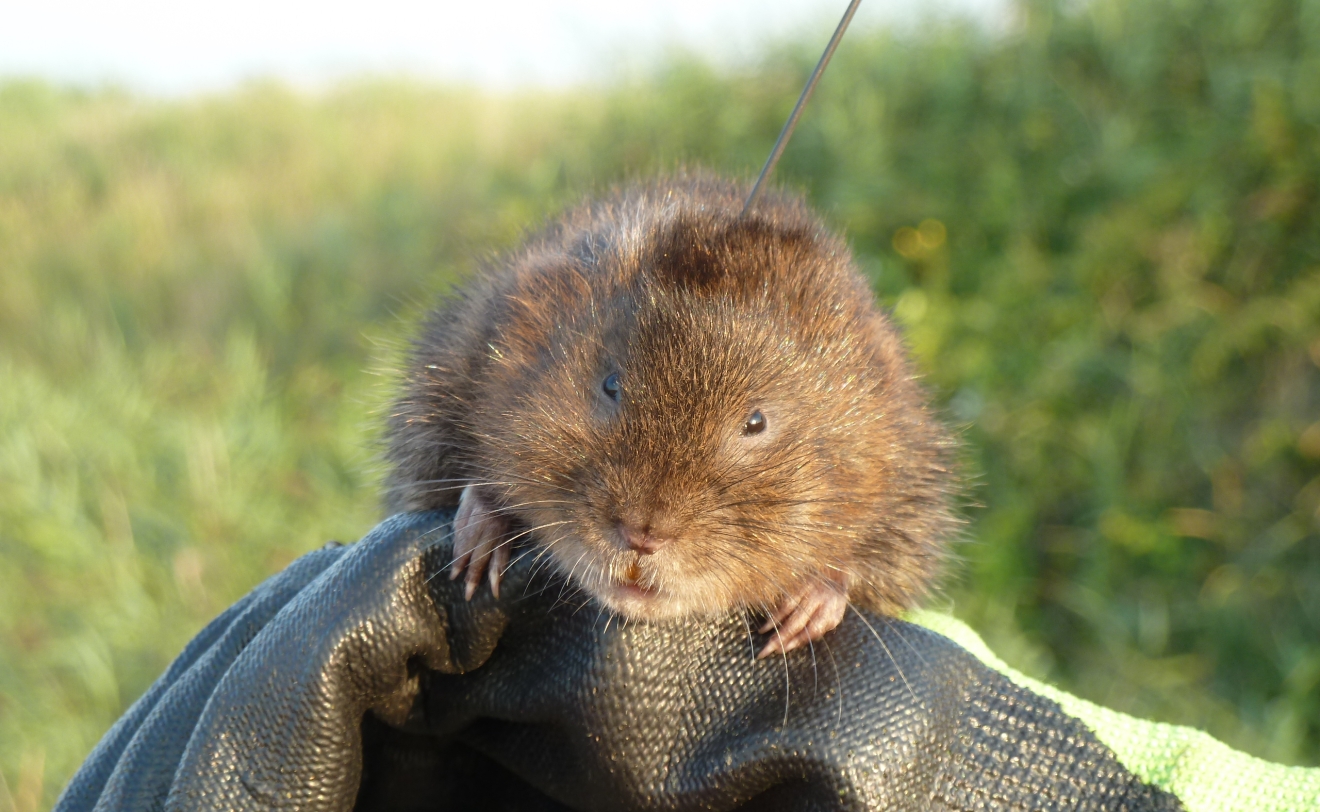
Conservation Science MSc study reports that water voles favour Coir Rolls of the five different riparian habitats studied on the Middle Level waterways.
Imperial College London MSc student Lucy Stoddart’s research explored the mitigation strategy of installing Coir Roll revetments in the Cambridgeshire and Norfolk Fens to encourage water voles.
It looked at whether water vole occupancy differs between Coir Roll revetments and four other riparian management types, and how effective the mitigation strategy of installing Coir Roll revetments to encourage water voles to previously unoccupied sites is.
The five riverbank management types studies, were:
- Bare bank with no management
- Natural sedge bank
- Ledge installed just above the summer water level and planted with pre-established lesser pond sedge plugs
- Coir Roll revetment pre-planted with five riparian plant species (lesser pond sedge; purple loosestrife; yellow flag iris; reed canary grass; soft rush)
- Hard engineered corrugated metal sheets and wooden boards enclosing flint stones at the water’s edge



Data collected from water vole latrine presence, droppings and feeding remains revealed that 95.45% of the Coir Roll revetment sites surveyed were occupied by breeding water voles, which was a far higher figure than any of the other management types studied, including natural sedge, which had 86.36% of occupied sites.
The study suggests that as Coir Roll revetments absorb the hydraulic power of the river they allow the pre-vegetated plants time to establish without being damaged by erosion, whilst simultaneously offering a bank water voles are able to burrow into.
They also have a high percentage of sedge, which is a key food source and shelter provider for water voles. Indeed, the feeding remains showed that sedge and yellow flag iris were the plants most favoured by the water voles from the Coir Rolls’ vegetation mix.
Stoddart concludes that:
The success of coir roll revetments to increase riverbank occupancy by water voles is quantifiably demonstrated for the first time, and previous unquantified observations are now supported.
As well as the clear benefits to biodiversity, partly due to their ability to reduce erosion, coir roll revetments are an unobtrusive feature, which may appeal to developers wishing to install a riparian revetment with high aesthetic value.
As a result, the implementation of coir roll revetments is strongly encouraged for future projects.
The European water vole is Britain’s fastest declining native mammal and is a Biodiversity Action Plan (BAP) Priority Species.
The research conducted at the Middle Levels is very encouraging and makes an excellent case for the use of pre-established Coir Rolls as a river bank management solution being crucial to the species’ survival.
